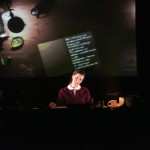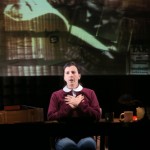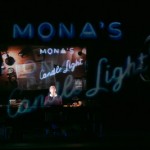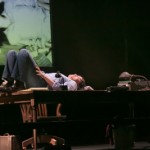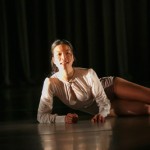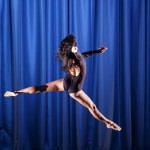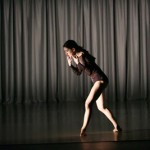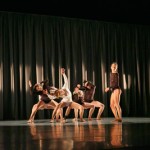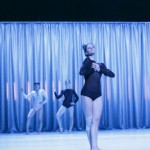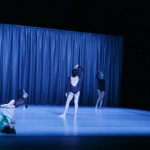CFA Arts Administration Intern Chloe Jones ’15 talks to writer, director, and performer Thaddeus Phillips of Lucidity Suitcase Intercontinental about the Connecticut premiere of his solo theater work “17 Border Crossings,” taking place this Saturday, February 21, 2015 at 8pm in the CFA Theater.
What was the initial inspiration for “17 Border Crossings”?
Most of the shows I’ve made with Lucidity Suitcase Intercontinental involved traveling somewhere to make the show. The travel is done as research for the performance. For example, we did a road trip from Denver to L.A., and we dropped down into New Mexico where we tried to find all the old parts or Route 66, and we filmed stuff and took notes and developed this piece called Flamingo/Winnebago based off that trip. We’ve done that in Bosnia, Cuba, the Amazon. But what would happen is I would come back and tell people stories of things that happened that weren’t directly related to the project we were doing, and I realized I wanted to do something with all this “outtake” material that was simply about travel. It didn’t have a storyline or a plot. It was just about traveling, and then I realized all of the stories that I was remembering or finding were about border crossings.
Can you talk a little about the work itself?

There are seventeen different scenes or sequences. I had done solo work before but very involved, complicated stuff with video or crazy sets, and [for 17 Border Crossings] I wanted to try doing the classic Spalding Gray monologue at a desk with a microphone and a glass of water. Because I’ve used video in other work recently, I’ve been trying to do works that are much more cinematic in their theatricality but with no video—the simplest scenes possible: the movement of a chair or lights or sound. The idea is to create a very modern/contemporary style of theater but without any media that actively engages the audience’s imagination, individualizing the experience more. If you use a bunch of media, everyone’s seeing the same thing, but if you simply suggest something and fill it in with text and sound, then the way you’re seeing it is a little bit different than the way the person next to you is seeing it because it’s not fully there yet.
Other than the overarching theme of border crossing, what elements of traveling does the work address?
There’s a few: one is that modes of transportation are weird, like a plane is a very weird thing if you really think about it, so there’s a little sequence about being in a plane that tries to expose all that—what you’re not supposed to think about. Then there’s always being taken to a little square room by immigration authorities. Technically when you land, before you leave Customs, you’re not anywhere. [It’s] this weird space where you go through the passport control. You’re in an architectural space that’s been defined as nowhere in the world. Then the whole absurdity of borders themselves, like the border between Israel and Jordan was made up by Winston Churchill, and he made jokes about it, saying “I just invented a country!”
What do you see as the significance of performing this work in such a globalized world, where travel is so much more accessible than it once was and so many more people are traveling?
When you start talking about these little stories or human stories, what you have is a huge global theme but [told] through specific details about a very specific person. What the show tries to do is make very human what it is to cross a border, from being on a plane and being completely unconscious of what’s going on underneath you to people trying to get across for a better life.
Lucidity Suitcase Intercontinental: 17 Border Crossings
Connecticut Premiere
Saturday, February 21, 2015 at 8pm
CFA Theater
$19 general public; $17 senior citizens, Wesleyan faculty/staff/alumni, non-Wesleyan students; $6 Wesleyan students
An Outside the Box Theater Series event presented by the Theater Department and the Center for the Arts.







